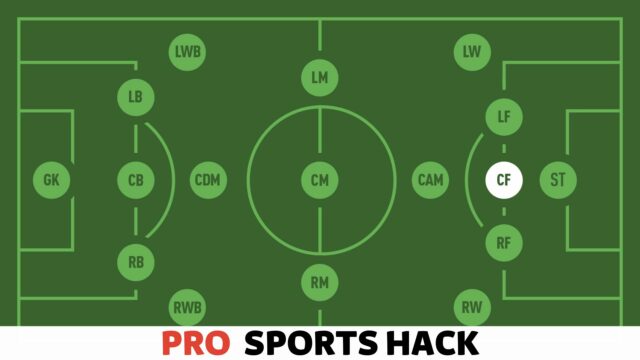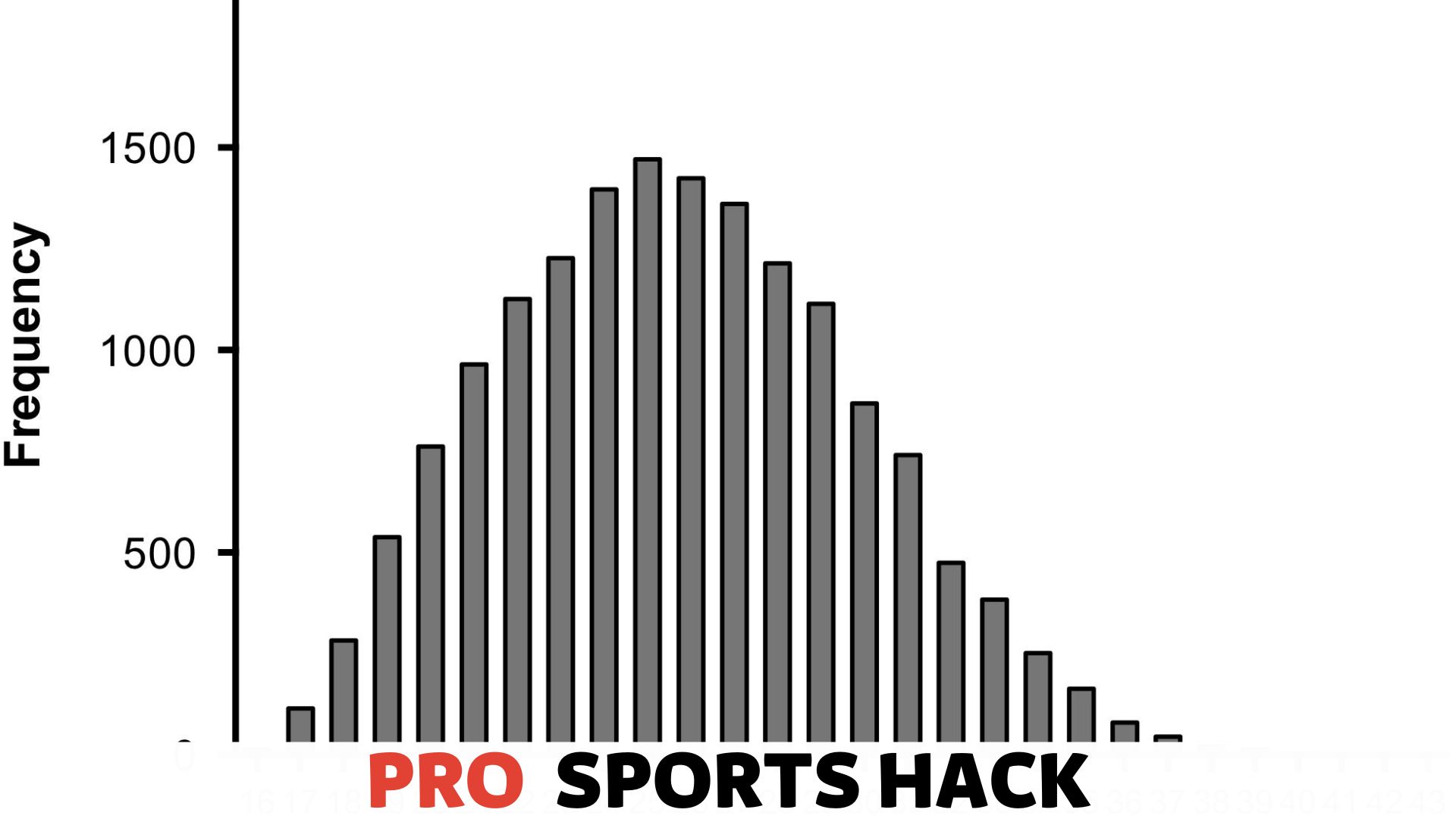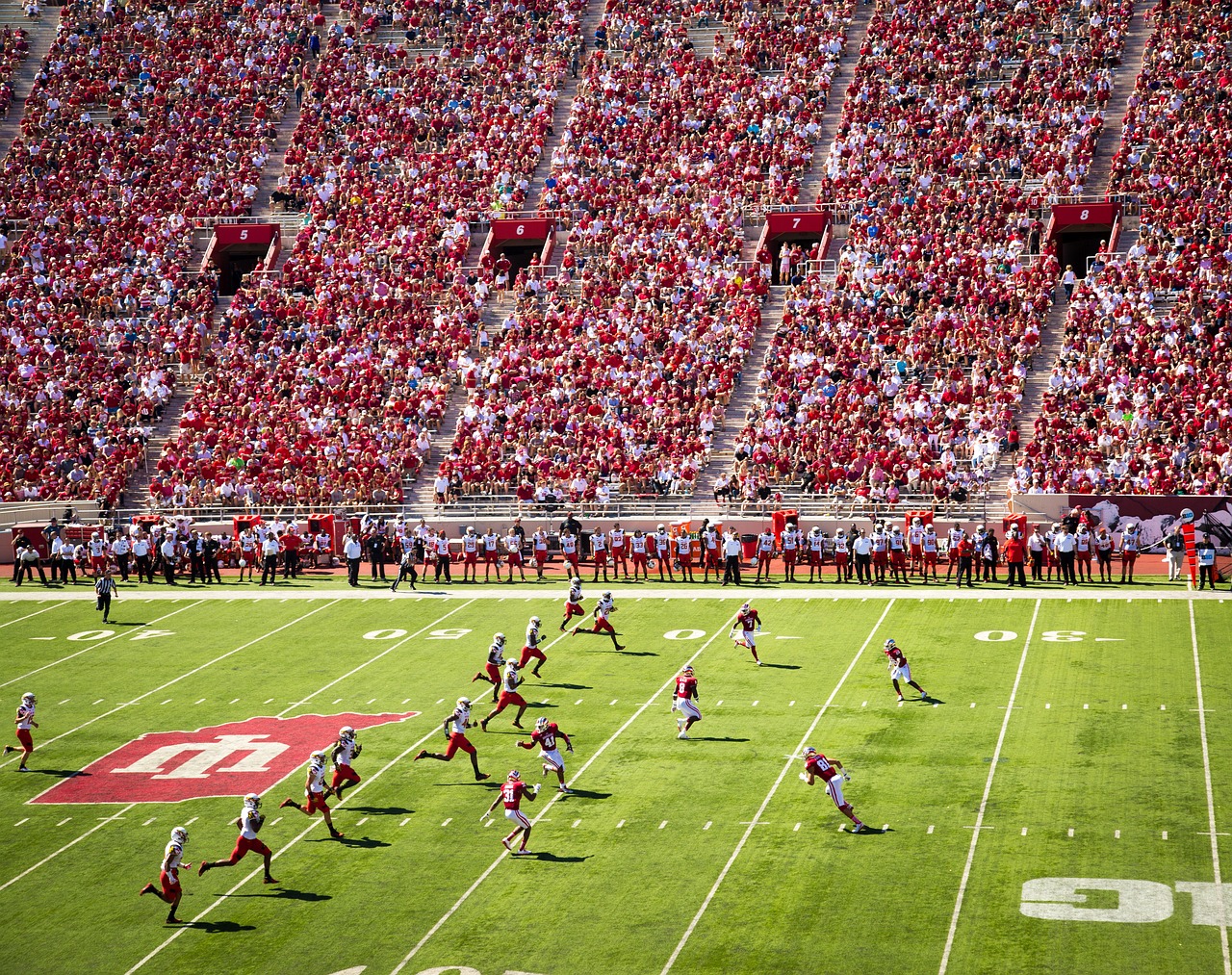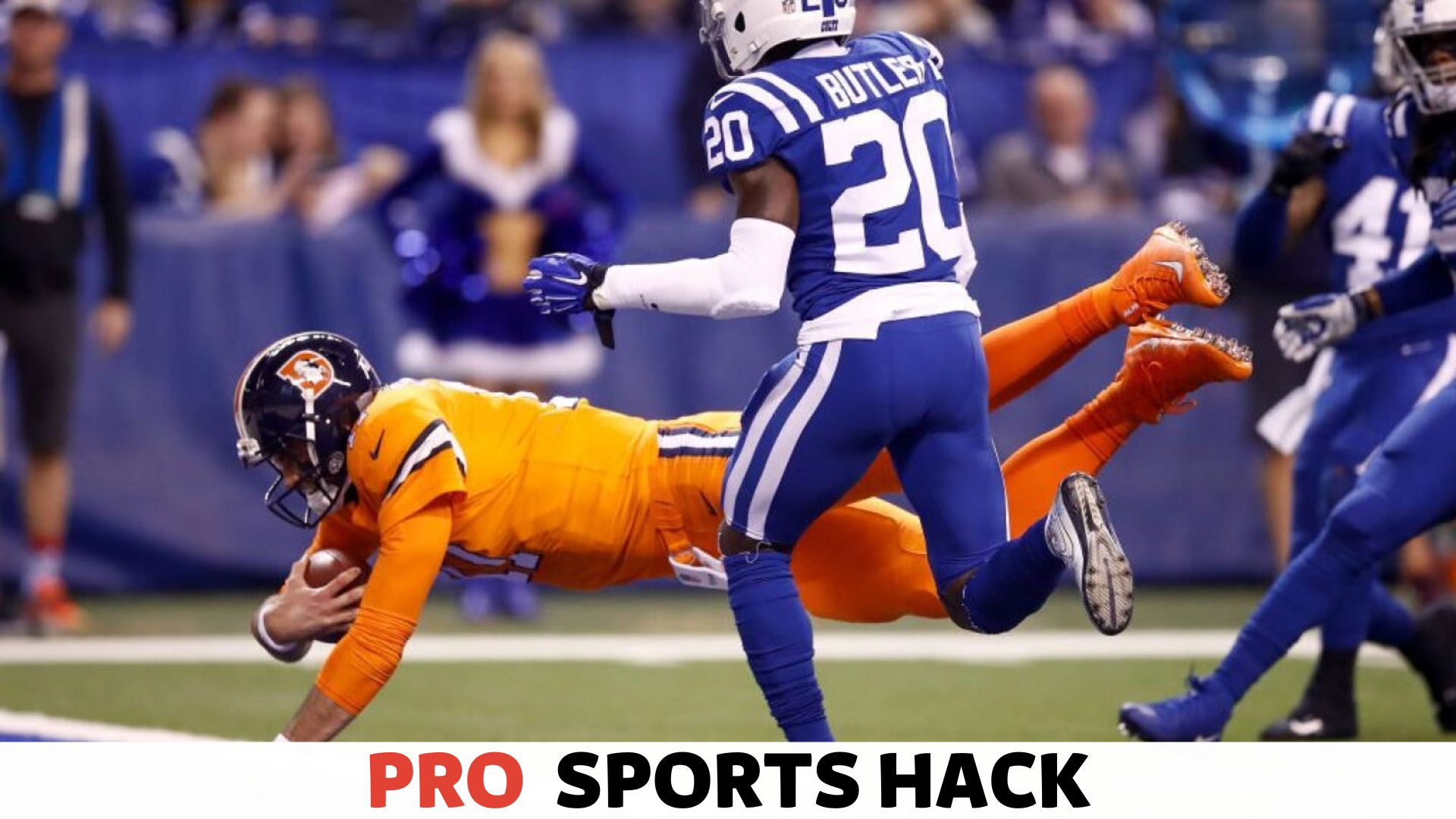
The CF position in football is the forward player primarily operating in a central attacking role. This player is responsible for scoring goals and creating offensive opportunities for the team.
Football teams rely on a strong CF to lead their attacking strategy and contribute to the game’s overall success.
The CF position requires a combination of speed, skill, and tactical awareness to navigate the opposition’s defense and deliver scoring opportunities effectively.
This key role often represents the focal point of a team’s offensive play, applying pressure on the opposition and creating space for other players to exploit.
A successful CF possesses a strong sense of positioning, technique, and finishing ability, making them a vital asset to any team’s attacking prowess.
Understanding the Role of a CF Player
When it comes to the game of football, each position has its unique set of responsibilities and requires a specific skill set. One such position is that of a CF player, which stands for center forward.
Understanding the role and significance of a CF player can help fans and players alike appreciate the strategic importance of this position.
Responsibilities and Skills of a CF Player
A center forward, also known as a striker, plays a crucial role in the team’s offensive strategy. Their primary responsibility is to score goals and create scoring opportunities for their teammates.
To effectively fulfill this role, a CF player must possess technical skills, physical attributes, and a tactical understanding of the game.
Technical Skills
To excel as a CF player, one must have exceptional ball control, dribbling, and accurate shooting skills. This allows them to maneuver past defenders, create space, and take shots on goal.
The ability to receive and hold the ball under pressure is also essential to bring other players into play. Furthermore, a CF player should excel in aerial duels, winning headers, and directing them toward the goal.
Physical Attributes
Physical attributes play a key role in the success of a CF player. They must possess speed, agility, and strength to outrun and outmuscle defenders.
Their ability to quickly change direction, make sharp turns, and accelerate enables them to create separation and exploit gaps in the opposition’s defense.
Moreover, stamina is crucial as a CF player needs to maintain high energy levels throughout the match to contribute effectively in attack and defense.
Tactical Understanding
A CF player must possess a deep understanding of the team’s tactical approach and be able to execute various strategies effectively.
They need to make intelligent runs into the channels, exploit spaces, and position themselves well to receive balls from teammates.
Additionally, they should possess good spatial awareness and can hold up play, bringing other players into the attack.
Contributions to the Team
Center forwards are not solely responsible for scoring goals. They also play an integral role in the overall team dynamic. Their ability to keep defenders occupied, draw them out of position, and create scoring opportunities for their teammates is invaluable.
A good CF player operates as a link between the midfield and the attack, helping to build up play and catalyze offensive movements.
Moreover, a CF player’s presence and threat in the penalty area force opposition defenders to pay close attention, thus creating space for other players to exploit.
Whether through scoring goals, making assists, or creating chances, the contributions of a CF player can be instrumental in determining the outcome of a match.
Importance of Strategic Positioning
Strategic positioning is one of the most critical aspects of a CF player’s role. They must consistently be in advantageous positions to receive passes and create scoring opportunities.
This requires a deep understanding of the game and the ability to read the opposition’s defense and exploit its weaknesses.
By mastering strategic positioning, a CF player can create space for themselves and their teammates.
They can draw defenders away from their designated areas, create overloads in certain pitch zones, and exploit gaps left by the opposition’s defensive line.
Effective positioning allows a CF player to maximize their involvement in the game and increase their chances of making a significant impact.
In conclusion, understanding the role of a CF player goes beyond merely recognizing their responsibility to score goals.
A successful CF player possesses various technical, physical, and tactical skills, and their contributions to the team extend beyond scoring.
With strategic positioning and keen awareness, a CF player becomes a formidable asset in any football team’s arsenal.
Key Attributes of a Successful CF Player
When it comes to playing as a Center Forward (CF) in football, certain key attributes are crucial for achieving success on the field.
A successful CF player must possess physical fitness, technical skills, and tactical awareness. This enables them to be an effective presence up front, scoring goals and creating opportunities for their team.
Physical Fitness and Stamina
Playing as a CF requires exceptional physical fitness and stamina. CF players need to be able to withstand the demands of the game, running relentlessly and making explosive movements throughout the match.
Their fitness level directly impacts their ability to keep up with the game’s pace, make those crucial runs into the box, and outmuscle defenders in key situations.
Here are some key physical attributes that every successful CF player must possess:
- Strength: A CF player should be able to hold off defenders and win aerial duels. They must use their body effectively to shield the ball and create space for themselves and their teammates.
- Speed: Quick bursts of acceleration are vital for a CF player to get past defenders and create scoring opportunities. The ability to leave defenders in their wake can be a game-changer.
- Agility: The ability to change direction quickly is crucial, allowing a CF player to evade defenders and create space for themselves or their teammates.
- Endurance: The game can last 90 minutes or even more, and a CF player needs to maintain a high level of performance throughout. Good endurance allows them to keep making well-timed runs and be a constant threat to the opposition.
Technical Skills and Ball Control
Aside from physical attributes, a successful CF player must possess exceptional technical skills and ball control.
These skills enable them to precisely manipulate the ball, maintain possession, and create opportunities for themselves and their teammates.
A CF player with poor technical skills can struggle to make an impact, even if they possess the necessary physical attributes.
Some key technical skills that every successful CF player should develop are:
- Shooting: The ability to strike the ball accurately and powerfully is crucial for a CF player. They must be able to finish chances and convert half-chances into goals, extending their shooting range beyond just close-range efforts.
- Dribbling: A CF player should be comfortable with the ball at their feet, able to take on defenders and beat them in one-on-one situations. Effective dribbling skills allow them to penetrate defenses and create scoring opportunities.
- First Touch: Having a good first touch allows a CF player to control the ball effectively and quickly react to game situations. It sets them up for precise passes, shots, or dribbles.
- Passing: While a CF player’s primary role is scoring goals, their ability to make accurate and well-weighted passes is also crucial. They often find themselves involved in build-up play and need to be able to create opportunities for their teammates.
Tactical Awareness and Vision
Tactics play a fundamental role in football, and a CF player’s tactical awareness and vision can significantly affect their performance.
They must be able to read the game, maintain positional discipline, and make intelligent decisions in different situations on the field.
Here are some important aspects a successful CF player must possess in terms of tactical awareness and vision:
| Tactical Awareness | Vision |
|---|---|
| Maintaining positional discipline and understanding their role within the team’s overall tactics. Exploiting spaces and creating opportunities by making intelligent runs. Recognizing defensive weaknesses and adjusting their positioning to exploit them. | Anticipate teammates and opponents’ movements to make well-timed passes and create goal-scoring opportunities. Seeing passing angles others might miss enables them to play through balls and unlock defenses. An overview of the game allows them to make split-second decisions and be one step ahead of the opposition. |
A successful CF player combines these tactical attributes with their physical fitness and technical skills to become a true game-changer in the center of the pitch.
Training and Development for the CF Position
The center forward (CF) position in football requires unique skills and abilities, making training and development crucial for players in this role.
To excel as a CF, players need to focus on physical conditioning, technical drills, and tactical awareness specific to their position. Let’s take a closer look at each of these aspects.
Physical Conditioning and Strength Training
Being a center forward demands not only technical finesse but also physical prowess. CFs undergo rigorous physical conditioning and strength training programs to optimize performance on the field.
These programs typically include:
- Endurance training to improve stamina and resilience throughout the match.
- Strength training exercises such as squats, lunges, and deadlifts enhance power and explosiveness during sprints and challenges.
- Agility drills to enhance quickness, change of direction, and overall agility on the pitch.
- Core strengthening exercises to maintain balance and stability and generate power in movements.
By focusing on physical conditioning and strength training, CFs can improve their speed, endurance, agility, and overall performance on the pitch.
Technical Drills and Ball Mastery Exercises
Technical skills are crucial in a CF’s ability to impact the game significantly. CFs engage in various technical drills and ball mastery exercises to refine their technique and control.
These training methods typically involve:
- Dribbling drills to enhance close ball control and the ability to take on defenders.
- Shooting drills to improve accuracy, power, and the ability to finish scoring opportunities.
- Passing and receiving exercises to develop precise and quick distribution of the ball.
- Heading exercises to excel in aerial battles and capitalize on opportunities in the box.
By consistently practicing technical drills and ball mastery exercises, CFs can elevate their skill level, enabling them to contribute more effectively to their team’s attacking play.
Tactical Awareness and Position-Specific Training
Successful CFs not only excel individually but also possess a thorough understanding of the game’s tactical aspects.
They work on developing their tactical awareness and undergo position-specific training to maximize their impact on the pitch.
Position-specific training for CFs can include:
- Analysis of game situations to understand optimal positioning and movement in different attacking scenarios.
- Off-the-ball movement training to create space, make intelligent runs, and exploit defensive weaknesses.
- Understand and execute different types of runs, such as diagonal, decoy, and runs behind the defense.
- Participating in team training sessions focusing on attacking strategies, set plays, and coordination with teammates.
By working on tactical awareness and engaging in position-specific training, CFs can align their skills with their team’s playing style and make smarter decisions on the pitch.
In conclusion, training and development are vital for CFs to excel.
By focusing on physical conditioning and strength training, technical drills and ball mastery exercises, as well as tactical awareness and position-specific training, CFs can enhance their overall performance and significantly impact their team’s attacking play.
Famous CF Players in Football History
The striker position, often referred to as the center forward (CF), is one of the key positions in football. The CF, also known as the number 9, is responsible for scoring goals and leading the team’s attacking line.
This position requires finishing chances, creating team opportunities, and holding up play.
Over the years, many legendary CF players have graced the football world with their exceptional skills and game-changing performances.
Let’s dive into the analysis, contributions, achievements, and impact of some of football’s most famous CF players.
Analysis of Legendary CF Players
The analysis of legendary CF players gives us a glimpse into their unique playing styles, strengths, and contributions to the game. These players possessed exceptional speed, agility, skill, and vision, making them a nightmare for defenders.
Their ability to find the back of the net consistently set them apart from their counterparts and left an indelible mark on the sport.
Contributions and Achievements
The contributions and achievements of famous CF players are numerous on an individual and team level.
These players have won multiple accolades, including prestigious titles such as the FIFA World Cup, UEFA Champions League, and domestic league championships.
They have scored hundreds of goals throughout their careers, becoming icons and role models for aspiring strikers.
Their goal-scoring prowess and ability to make a difference in critical moments have often secured victories for their teams, inspiring fans and leaving an unforgettable legacy.
Impact on the Game
The impact of legendary CF players on the game extends far beyond their performances. Their influence can be seen in modern football, with teams often molding their tactics around a prolific CF.
These players have set new standards for excellence, inspiring young talents to dream big and work hard to achieve similar success.
Their ability to change the outcome of a match with a single moment of brilliance has made the CF position one of the most revered and sought-after in football.
Tactical Approaches for Utilizing the CF Position
The center forward (CF) position is crucial to the team’s tactical approach in football. Whether in a high-pressing style or a possession-based game, the CF can greatly influence the outcome of a match.
This article will delve into the strategic considerations and various formations to optimize the potential of the CF position.
Playing Style and Formation Considerations
When determining a team’s playing style and formation, it is essential to consider the strengths and skill set of the CF. The playing style can vary depending on whether the team prefers a direct approach or a more intricate build-up.
A direct style focuses on long balls and crosses into the box, while an intricate build-up emphasizes quick passes and positional interchanges. The characteristics of the CF should align with the team’s desired playing style.
Furthermore, the formation chosen can also impact the effectiveness of the CF position. For instance, in a 4-4-2 formation, the CF often works with a strike partner, forming a potent attacking duo.
On the other hand, a 4-3-3 formation provides the CF with more support from the wingers, enabling them to exploit spaces and create scoring opportunities.
Therefore, coaches must carefully analyze the team’s strengths and adapt the formation accordingly.
Implementing CF in Various Systems
Implementing the CF in different systems requires a tailored approach. In a system with a lone CF, such as a 4-2-3-1 or a 4-5-1, the player must possess exceptional hold-up play and the ability to link the attacking midfielders.
Their role involves scoring goals and creating opportunities for the teammates around them.
On the other hand, in systems that feature two strikers, the CF often has more freedom to roam and interchange positions. This allows them to confuse the opposition’s defense and exploit spaces in different areas of the final third.
The partnership between the two strikers is crucial, as it requires a good understanding of each other’s movements and tendencies.
Role of CF in Attack and Defense
The role of the CF is not limited to contributing to the team’s attacking prowess but also to defensive duties. The CF is the focal point in attack and targets through balls and crosses.
Their ability to hold the ball and bring others into play is vital for gaining territorial advantage and creating goal-scoring opportunities.
Defensively, the CF can contribute by pressing the opposition’s defenders, forcing mistakes, and disrupting their build-up play. They are crucial in setting the team’s defensive line and initiating counter-pressing.
This active defensive involvement further highlights the significance of the CF position in both phases of the game.
In conclusion, the tactical approaches for utilizing the CF position in football are diverse and depend on the team’s playing style and chosen formation.
The CF’s role in attack and defense exceeds scoring goals and requires diverse skills. Coaches must analyze their team’s strengths and adapt their strategies accordingly to maximize the potential of the CF position.
Improving Performance As a CF Player
The role of a forward in football is crucial to a team’s success. As a center forward (CF), your performance on the pitch can significantly impact the game’s outcome.
Whether finding the back of the net or creating goal-scoring opportunities for your teammates, there are various ways to enhance your skills as a CF player.
In this section, we will explore strategies and tips that can help you improve your performance as a CF player.
Tips for Enhancing Shooting and Finishing Skills
One of the most essential skills for a CF player is the ability to shoot accurately and finish chances. Here are some tips to improve your shooting and finishing skills:
- 1. Perfect your technique: Practice your shooting technique regularly to develop accuracy and power. Focus on your body positioning, balance, and follow-through.
- 2. Work on your weak foot: To become a well-rounded player, being proficient with both feet is crucial. Spend extra time practicing shooting and finishing with your weaker foot to improve overall versatility.
- 3. Drill repetition: Consistency is key in shooting and finishing. Repeat specific drills that simulate game situations to enhance muscle memory and decision-making abilities.
- 4. Learn from the best: Study the techniques and movements of top CF players and try to incorporate their skills into your game. Observe their positioning, timing, and precision in front of the goal.
Developing Communication and Teamwork
Effective communication and teamwork are vital for a CF player to thrive. Here are some strategies to enhance your communication and teamwork:
- 1. Vocalize your intentions: Communicate your intentions with your teammates, such as when you want a through ball or a cross. Clear communication can help your teammates understand your movements and provide accurate passes.
- 2. Understand your teammates: Take the time to understand the playing style and strengths of your teammates. This understanding can help you anticipate their movements and provide effective support.
- 3. Make intelligent runs: Creating goal-scoring opportunities often relies on making intelligent runs off the ball. Analyze the game, identify areas where you can exploit space, and make purposeful runs.
- 4. Develop telepathic understanding: Build a strong understanding with your fellow players by training together consistently. This can lead to a better understanding of each other’s movements and improve your ability to create goal-scoring opportunities.
Strategies for Creating Goal-Scoring Opportunities
Creating goal-scoring opportunities is a primary focus for a CF player. Here are some strategies to help you in this aspect of your game:
- 1. Positioning: Learn to position yourself optimally in and around the box to be in a position to receive crosses and rebounds. Focus on your timing to arrive at the right place at the right moment.
- 2. Awareness of space: Developing a keen awareness of the playing field will enable you to identify areas where you can exploit space and create goal-scoring opportunities.
- 3. Movement without the ball: Make intelligent and purposeful movements to create space for yourself and pass options for your teammates.
- 4. Anticipation: Anticipating the movements of your teammates and the opposition’s defenders and goalkeeper can give you an edge in creating goal-scoring opportunities.
Incorporating these tips and strategies into your training regimen can enhance your performance as a CF player.
Remember to practice consistently, analyze your performances, and strive to improve your skills to become a more effective and impactful CF player.
Challenges and Adaptations in the CF Position
The center forward (CF) position in football is crucial to the team’s attacking strategy. However, this position is not without its challenges.
CF players must constantly adapt to various situations on the field, requiring them to deal with defensive marking and pressing, adjust to different playing conditions, and overcome mental and physical challenges.
In this section, we’ll explore these challenges and the necessary adaptations to excel in the CF position.
Dealing with Defensive Marking and Pressing
Defensive marking and pressing are tactics often employed by opposing teams to neutralize the threat posed by a talented CF.
When faced with defensive pressure, CF players must remain composed and find ways to outsmart their opponents.
Here are a few strategies they can employ:
- Movement off the ball: CF players must constantly move, creating space and making it harder for defenders to maintain their tight marking. This can be achieved through diagonal runs, dropping deep to receive the ball, or making explosive sprints to exploit gaps in the defense.
- Hold-up play: When tightly marked, a CF can use their strength and positioning to receive the ball and then distribute it to teammates in better positions. This allows the team to maintain possession and create opportunities for goals.
- Quick passing and one-twos: By mastering quick passing and one-twos with their teammates, CF players can bypass defensive pressure, create openings, and destabilize the opposition’s defensive structure.
Adjusting to Different Playing Conditions
Football is played in various climates and on different types of pitch surfaces. Adaptability is key for CF players to perform at their best in any playing conditions. Here are some ways they can adjust:
| Playing Condition | Adaptation |
|---|---|
| Wet and slippery pitch: | Focus on balance and stability, adjusting running patterns to avoid slipping, and using quick changes in direction to unsettle defenders. |
| Dry and hard pitch: | Adapt shooting techniques to account for the ball bouncing higher and faster on hard surfaces and modify movements to reduce the risk of injury. |
| Extreme weather conditions: | Maintain hydration levels, focus on proper warm-ups and cool-downs, and adjust game tactics to account for the impact of weather on ball movement and player performance. |
Overcoming Mental and Physical Challenges
The CF position requires mental fortitude and physical strength. To overcome the challenges they face, CF players must focus on the following:
- Mental resilience: CF players must stay mentally strong, maintaining confidence even when they face physicality and aggressive defending. This resilience allows them to stay focused on their objective and maximize every opportunity.
- Physical conditioning: Building stamina, strength, and agility through structured training programs is essential for CF players. They must withstand the physical demands of constant running, battling against defenders, and executing explosive movements.
- Injury prevention: Given the demands of the CF position, players must prioritize injury prevention through proper warm-ups, stretches, and post-match recovery routines.
By successfully navigating the challenges posed by defensive marking, adapting to varying playing conditions, and ensuring mental and physical preparedness, CF players can excel in their position and contribute significantly to their team’s success.
Evolution of the CF Position in Modern Football
The center forward (CF) position in football has undergone significant changes over the years, adapting to the evolving nature of the game.
Various factors, including historical developments, tactical innovations, and coaching philosophies, have influenced this transformation.
Understanding the historical background and evolutionary changes of the CF position provides insights into the influence of these elements and offers a glimpse into the future trends and transformations of this critical role on the football pitch.
Historical Background and Evolutionary Changes
To comprehend the present state of the CF position, it is essential to delve into its historical background.
In the early days of football, the CF was primarily seen as a goal scorer who operated close to the opponent’s goal, taking advantage of their immense shooting prowess.
However, as the game advanced, the tactical demands placed on the CF evolved.
The CF began to assume a more multifaceted role, involving not only scoring goals but also creating scoring opportunities for their teammates.
This shift in responsibilities resulted in the CF becoming more involved in the build-up play, dropping deeper to link up with midfielders and wingers, and contributing to the overall attacking strategies of the team.
Technological advancements further influenced the evolutionary changes in the CF position. The introduction of offside rules and the modification of the playing surface had an impact on how the CF operated on the field.
Moreover, as the game became faster and more physically demanding, the CF had to adapt by improving their stamina, agility, and technical skills.
Influence of Tactical Innovations and Coaching Philosophies
The CF position has been greatly shaped by tactical innovations and coaching philosophies. The emergence of different formations, such as the 4-3-3, 4-4-2, and 4-2-3-1, has altered the role of the CF within the team structure.
Coaches started emphasizing the need for CFs with exceptional work rate, spatial awareness, and the ability to press defenders, forcing them to make quick decisions under pressure.
With the advent of possession-based football, CFs are no longer isolated upfront but are a crucial part of the team’s intricate passing sequences.
They are expected to contribute to both the offensive and defensive aspects of the game, seamlessly transitioning between roles depending on the team’s needs.
This shift has necessitated CFs to possess a diverse skill set, including good passing abilities, spatial intelligence, and the ability to create space for their teammates.
Future Trends and Transformation
The CF position is likely to witness further transformations in the future. As technology advances, data analysis and player tracking will play an increasingly significant role in shaping the demands placed on CFs.
Coaches will seek CFs who can interpret and exploit the data-driven insights to maximize their impact on the game.
Additionally, the increasing trend of playing with a lone striker may lead to CFs having to operate in tighter spaces and rely more on their technical abilities to create goal-scoring opportunities.
The importance of versatility in this position is also likely to rise, with CFs expected to adapt seamlessly to different tactical systems and formations.
Frequently Asked Questions
What is CF Position in Football?
The CF position in football refers to the center forward, who typically plays in the attacking position. They are responsible for scoring goals and often play a key role in the team’s offense.
What is the Difference Between CF and ST?
CF (Content Farming) and ST (Search Traffic) differ in their purpose. CF aims to produce a high volume of low-quality content, mainly for advertising revenue, while ST focuses on creating quality content to attract targeted organic search traffic for a website’s growth.
What Positions Have a CF?
The positions that have a CF, also known as Center Forward, are typically found in soccer and hockey teams. They are responsible for scoring goals and play a crucial role in the team’s offensive strategy.
What Lineup is CF in Football?
The CF in football stands for Center Forward. It is a position typically played by a striker responsible for scoring goals and leading the attack in the center of the field.
What is the Role of a Center Forward in Football?
A center forward is responsible for scoring goals and creating opportunities for the team’s attacking play.
Conclusion
The CF position in football is crucial for a team’s success. With their ability to score goals and create opportunities, the center forward plays a vital role in the attacking strategy.
Their positioning, movement, and finishing skills are unmatched, making them a valuable asset to any team.
Understanding the importance of this position can help teams maximize their offensive capabilities and secure victories on the field.
So, next time you watch a match, pay close attention to the center forward and appreciate their impact on the game.




![Cat in the Chrysalis Spoiler: All You Need To Know [Updated] Cat in the Chrysalis Spoiler](https://prosportshack.com/wp-content/uploads/2024/02/Cat-in-the-Chrysalis-Spoiler-100x75.jpg)














